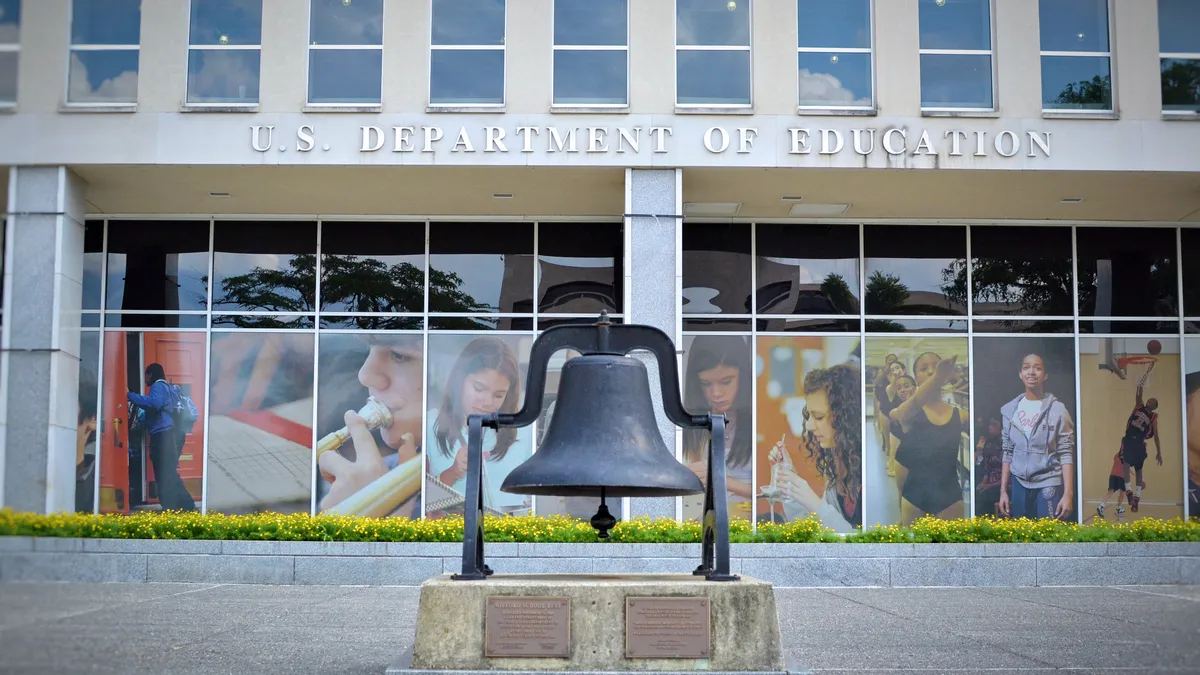Dive Brief:
-
The U.S. Department of Education on Thursday released more than $21 billion in coronavirus relief money to colleges, funded by the rescue package Congress passed last month.
-
Each colleges' cut of the funding must be split between institutional costs associated with the pandemic and direct aid for students.
-
Higher education groups and institutions have clamored for months for the federal government to provide more relief as the pandemic's financial impact intensified.
Dive Insight:
Congress hammered out the overall $900 billion deal in December, roughly nine months after approving the first round of funding. The new money was briefly imperiled when President Donald Trump unexpectedly declined to sign the measure, though he eventually did so.
The relief legislation provides about $23 billion for colleges, with some set-asides such as for minority-serving institutions. It also gives $681 million to for-profit colleges.
The first aid bill -- the Coronavirus Aid, Relief and Economic Security, or CARES, Act -- determined colleges' allocations based on their full-time-equivalent enrollment, weighted heavily toward how many students receive federal Pell Grants, a proxy for campus poverty.
The formula in the latest bill, however, also considers headcount, opening the door for community colleges, which enroll many part-time students, to receive more money.
As part of the funding release, the Education Department shared the amounts each college will get, including how much they have to earmark for student grants. Some wealthy private colleges have their portions cut in half, per the bill's requirements. Most of that money must be spent on student grants. Trump and former Education Secretary Betsy DeVos railed against these institutions accepting CARES money.
Colleges that received CARES dollars from the department will not need to apply for the new round of funding, according to a statement from the agency Thursday. Those that didn't get money last time will have to apply.
A letter from Christopher McCaghren, acting assistant secretary for postsecondary education, dated Thursday, pointed out that the new law directs colleges to "prioritize students with exceptional need," in awarding grants. Those could include Pell Grant recipients, but they do not have to be, McCaghren noted.
"I want to emphasize that institutions can use more than the minimum amount for financial aid grants to students and encourage you to do so," McCaghren wrote.















